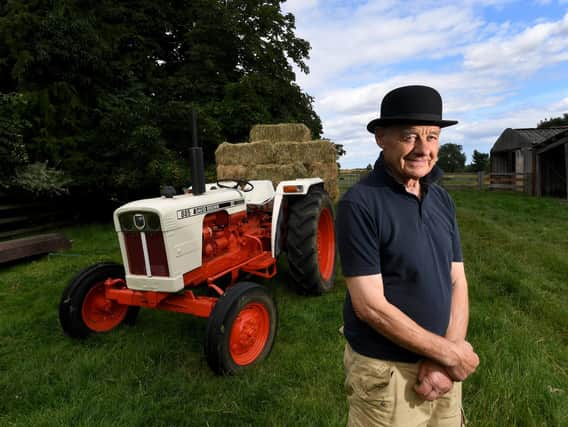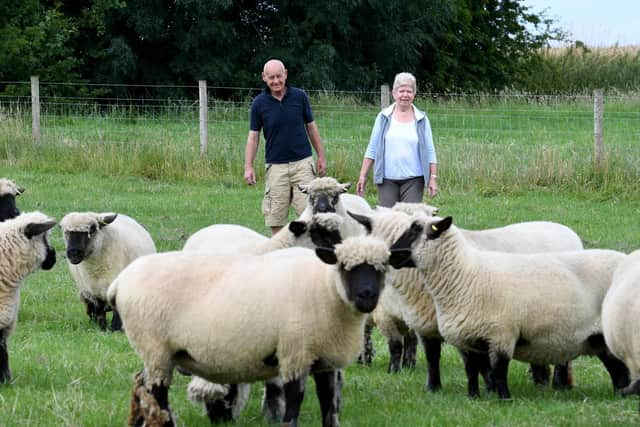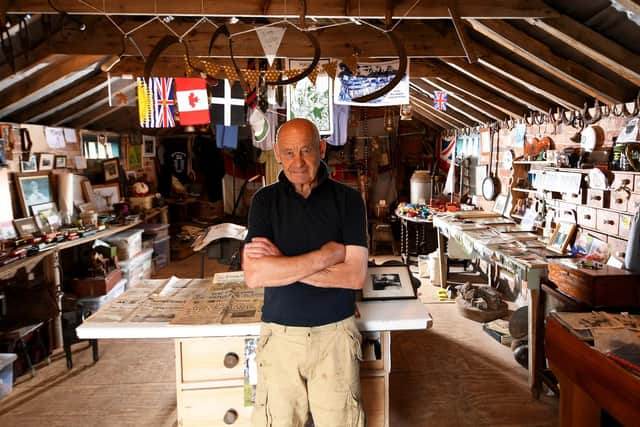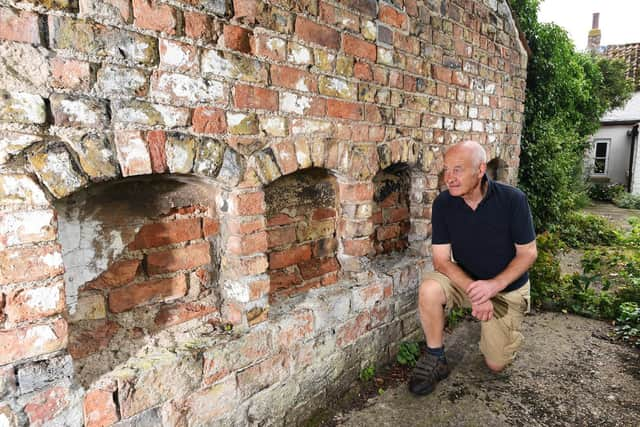Farm of the Week: Former Bishop Burton College lecturer who started out on the banks of the Humber Estuary


Bob Richardson has worn many hats in his career that has included lecturing at Bishop Burton College and sheep stewarding at the Great Yorkshire Show.
He was born in Warwickshire and spent his youth showing cattle with his uncle and famed showman, Joe Hutchinson, before studying for his NDA at Winmarleigh Hall in Lancashire.
Advertisement
Hide AdAdvertisement
Hide AdBob said his first taste of East Yorkshire had him anticipating a great nightlife.


“Uncle Joe got me a job on Sunk Island. I came along one September evening. As I approached the farm in Stone Creek I could see all the lights and thought girls and clubs. I found out the lights were on the south bank of the Humber.”
Undeterred, Bob joined Thorngumbald Young Farmers Club where he met wife Jean. They married and purchased the 12-acre Lamplough Farm in Little Leven in 1967. They started with a sow herd and rearing calves.
Bob said their initial idea was that it would be a stepping stone towards a bigger farm. “We built up to a herd of 90 sows. We sold store pigs to Rawson’s in Raywell and at Beverley livestock market.
Advertisement
Hide AdAdvertisement
Hide Ad“We reared 300 calves a year on contract for a feed company and then went on our own. We would take them from dairy farms in Lancashire in batches of 20. We kept them on milk for five to six weeks, weaned and sold them at 12 weeks, again in Beverley and to local finishers.


“This had been a market garden farm and we carried that on by growing 30,000 lettuces, 8,000 cauliflowers and 300 tomato plants. We also grew strawberries and had bees. We made honey, beeswax and candles.”
Bob began his career with Bishop Burton College in his mid-20s, starting part-time in examining and practical assessments of livestock tasks and working in the college’s out-centres of South Holderness, Driffield and Bubwith. Bob said he would turn his hand to any form of livestock.
“I worked with cattle, pigs, sheep and goats. The college became my main income when I was offered a full-time role after being primed by colleague Roy Frost who was in charge of various sections.
Advertisement
Hide AdAdvertisement
Hide Ad“We got rid of the pigs at home. I felt that I couldn’t really be working on the college pig unit during the day and then come back and work with ours later. It was too risky for both enterprises with the high incidence of cross contamination from a sector that suffers its fair share of diseases. During my years at Bishop, I ran the pig course, the National Certificate in Agriculture, and took on a whole range of other roles.”


Although he is best known in farming circles for sheep today, Bob had never thought about becoming a pedigree Oxford Down breeder until his uncle Harry retired in the 1980s.
Bob has since gone on to become one of the breed’s leading lights. He’s a renowned judge, has been society president twice, sits on the breed council and has won the breed title what must surely be a record thirteen times at Driffield Show.
Bob said the breed, which was one of the UK’s most popular crossing sires until the period between 1955-1970 is currently holding its own as a terminal sire.
Advertisement
Hide AdAdvertisement
Hide Ad“The breed first came about in the 1830s by the crossing of a Cotswold ram with Hampshire Down and Southdown ewes. Those early flocks were based in Witney, Oxfordshire which brought about the Oxford Down breed.
“At one time there would have been over 1,000 Oxford Downs sold at the annual Kelso ram sales but all breeds wax and wane. You would never have thought the mighty Suffolk would not be as popular as it once was.
“I have a photograph of my grandfather Samuel Richardson with his flock in 1899. He farmed at Horsley Lodge, just north of Derby, and that’s where the flock prefix Horsley comes from. When my grandfather died uncle Harry of Newark took over and had a flock of 70 breeding ewes.
“We took on the breed when Harry retired. We started with eight ewes from him. We now have between 25-30 breeding ewes at any one time.
Advertisement
Hide AdAdvertisement
Hide Ad“Our aim is to breed terminal sires that will work well with commercial flocks and we have also been responsible for setting off a lot of pedigree flocks. Presently, there are 120 flocks throughout the UK from Caithness to Cornwall.
“We sell to a big commercial farmer in the Peak District who likes his Oxford Downs and uses them on a variety of breeds. He says they are hardy and produce very good, fit, strong lambs.”
Bob said he has exported stock to Finland, Switzerland and Ireland and that the wool from Oxfords goes to Japan for use in futons.
“I’m setting up a young breeders’ section of the society and we will be presenting what will be an annual shield to the young person making the most significant contribution to the breed in the past year. I’d also like to see sponsorship of a bursary for training. We need to encourage future generations.”
Advertisement
Hide AdAdvertisement
Hide AdBob has been a ring steward for the sheep section at the Great Yorkshire Show for over 20 years. He has had two spells as he was also in charge of the sheep shearing in between.
He was particularly pleased with the Oxford Down classes this year, which had 25 entries.
Lamplough Farm also holds living history. Bob has explored the background to the bee holes, which are still evident in the arches at the end of one of the farm buildings and would have been homes for honey-producing bees centuries ago.
There is also a stone at the front of the house that Jonathan Lamplough, from where the farm name comes, is reputed to have purloined from the demolishing of St Faith’s Church in the 1840s to use as a mounting block to get on to his horse.